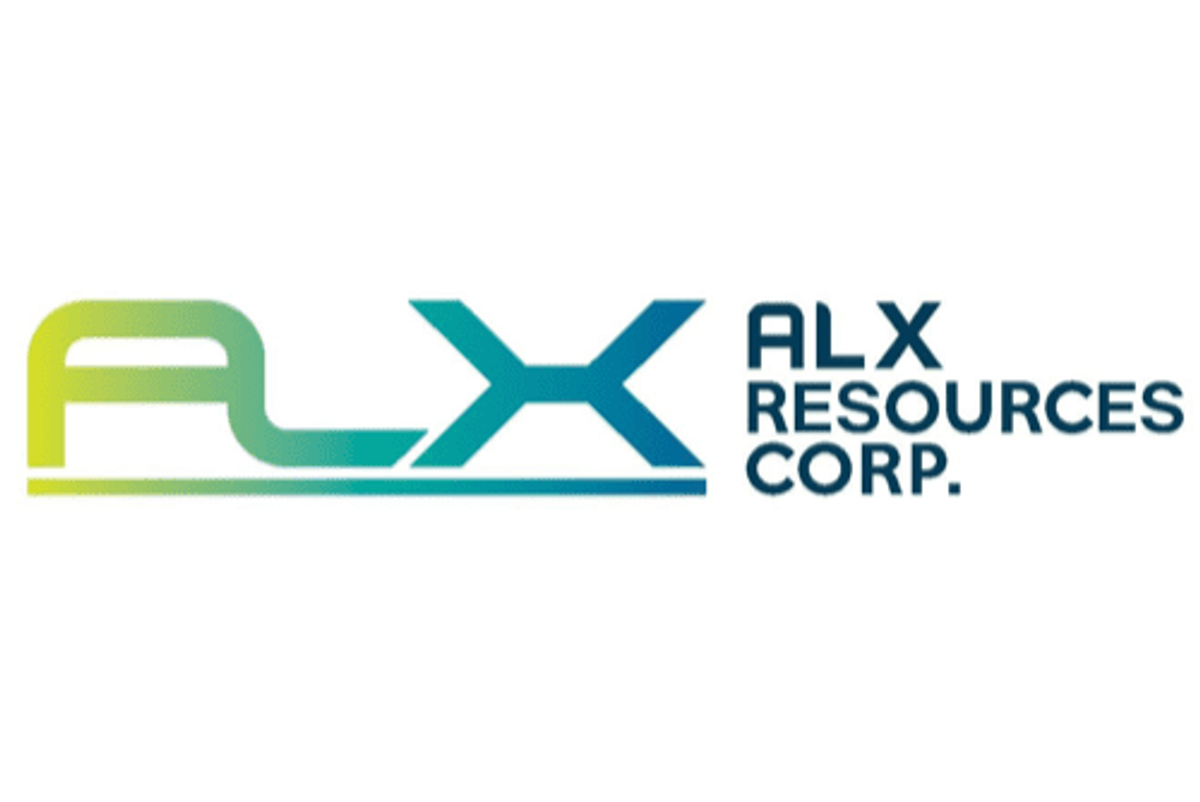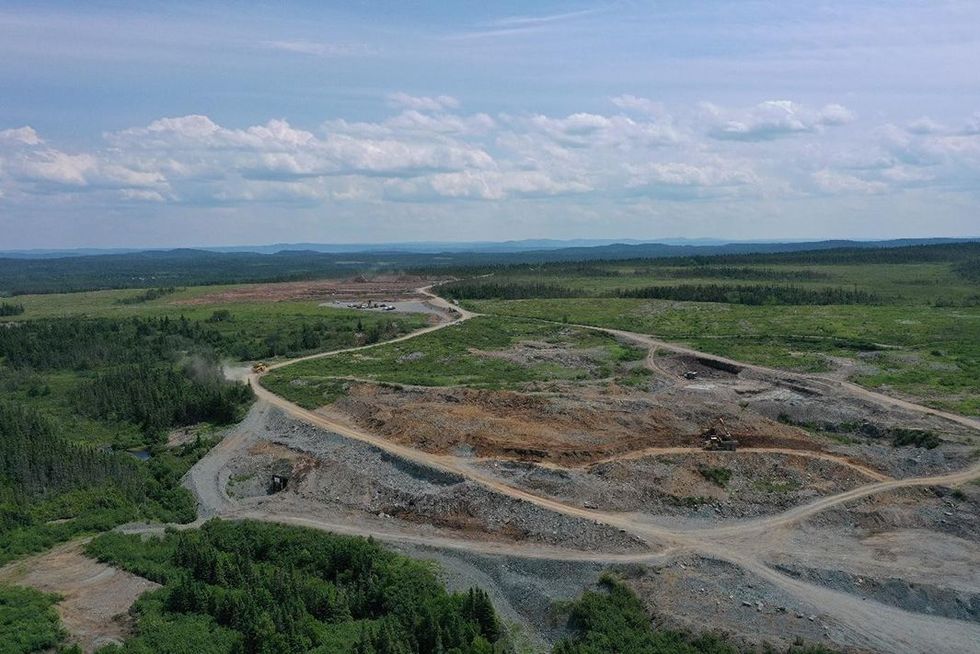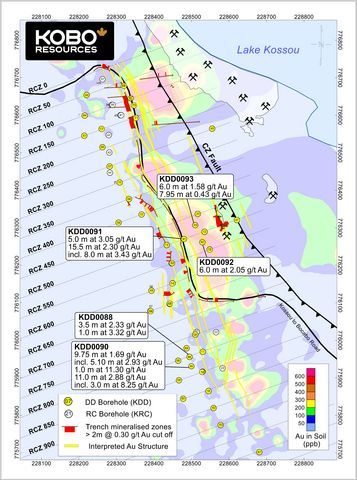
ALX Resources Corp. (TSXV: AL) (FSE: 6LLN) (OTC: ALXEF) ("ALX" or the "Company") is pleased to announce that a diamond drilling program is underway at the Alligator Lake Gold Project ("Alligator", or the "Project") located approximately 165 kilometres (103 miles) northeast of La Ronge, SK, Canada. The Project consists of five claims totaling 2,973.32 hectares (7,347.24 acres) and is prospective for high-grade gold mineralization.
Mobilization of the drilling program has commenced with the opening of an access road of approximately 4.5 kilometres (2.8 miles) from Provincial Highway 102 to the northernmost part of the Project, the Broken Hammer Showing area ("Broken Hammer"). An outcrop grab sample taken by ALX in October 2020 from an arsenopyrite-bearing quartz vein at Broken Hammer returned 504.0 grams/tonne ("g/t") gold (16.13 oz/ton), and 46.2 g/t silver, by fire assay. A follow-up total metallic gold assay commissioned by ALX returned 547.0 g/t gold (17.50 oz/ton).
ALX reviewed a recent geological interpretation of the Broken Hammer Zone and has planned a Phase 1 diamond drilling program to test Broken Hammer consisting of a minimum of 600 metres in up to six shallow drill holes.
To view maps of Alligator click here
Definitive Agreement for Alligator Lake Project
ALX and Alligator Resources Ltd. ("ARL", a private Saskatchewan corporation), have executed a definitive agreement incorporating the terms and conditions of a previously-announced binding letter agreement (see news release dated January 27, 2021). The definitive agreement provides ALX with the option to earn an initial 51% interest (the "First Option") and up to an 80% interest (the "Second Option") in the Project over a four (4) year period from the effective date of the definitive agreement in consideration for: (a) cash payments totaling $150,000, (b) the issuance of common shares of ALX to ARL totaling 1,500,000 common shares; and (c) ALX incurring eligible expenditures totaling $1,250,000 with respect to the Project.
Upon ALX obtaining an 80% interest in the Project (by exercise of both the First Option and the Second Option), ALX and ARL shall form a joint venture in respect of the development of the Project (with ALX as operator), with the terms of the joint venture agreement to be negotiated in good faith between the parties and fully-executed prior to ALX earning a 51% interest. Alligator is subject to an underlying 2.5% net smelter returns royalty ("NSR") on the sale of valuable minerals from the Project, of which half of the NSR (1.25%) can be purchased by ALX from the royalty holders at any time for $1.0 million.
ALX's acquisition of up to an 80% interest in Alligator is subject to acceptance of the definitive agreement by the TSX Venture Exchange ("TSXV").
About Alligator
Alligator is located adjacent to Provincial Highway 102, and has an established winter trail suitable for mobilizing drilling equipment directly to ALX's primary area of interest. The Project has been held since 1985 by ARL, and has been the subject of a number of seasonal prospecting programs and limited geophysical surveying. A total of 16 diamond drill holes have been drilled since 1995 to depths averaging less than 86 metres.
The Project is underlain by Precambrian Shield rocks of the Central Metavolcanic Belt ("CVB"), part of the La Ronge Domain. Northeast-striking and steeply northwest-dipping upper greenschist to lower amphibolite facies ultramafic to mafic metavolcanic rocks of the CVB are intruded by ultramafic to mafic sills. These ultramafic to mafic rocks are structurally underlain by similarly northeast-striking and northwest-dipping meta-arkose and calcareous metagreywackes of the McLennan‐Sickle Group.
The dominant structural feature at Alligator is the Byers Fault, which strikes in a northeasterly direction and dips to the northwest. The Byers Fault can be traced along the southeast shore of Alligator Lake and through a series of muskeg and small lake-filled topographic lows. The Byers Fault is recognized as a "first‐order" controlling structure for many "second‐order" quartz‐sulphide‐carbonate healed shear and tensional vein type gold deposits and occurrences in the greater Waddy Lake area (Schwann, 1991). In the Waddy Lake area, however, the Byers Fault trends approximately east‐west before stepping/flexing into a more northeasterly trend in the Contact Lake-Alligator Lake area. Large‐scale "bends" in fault systems are known to be the preferential location for dilatancies that could host gold-bearing quartz vein swarms.
South of Alligator Lake, a northeast striking contact between the metavolcanics and the metasediments is marked by a topographic lineament with sporadic outcrop displaying evidence of shearing, identified as the Radiant Shear Zone. The McLennan Lake Tectonic Zone ("MLTZ"), which is parallel to, but located approximately 2 kilometres southeast of the Byers Fault, is a major regional tectonic feature separating rocks of the Central Metavolcanic Belt from metasedimentary rocks of the MacLean Lake Belt to the east.
In 1995, Uranerz Exploration and Mining ("UEM") drilled four holes at 100-metre intervals along the Broken Hammer Shear Zone. The best intersection was 7.31 g/t gold (0.23 oz/ton) over 1.5 metres in hole AL‐02, from 38.9 metres to 40.4 metres, beneath the site where visible gold was discovered in the late 1980s (Avery and Leppin, 1995). The results of a summer 2013 field program confirmed that the Broken Hammer Showing is a deformed (boudinaged) quartz vein that has potentially been modified into a series of moderately plunging (50° to 70°) shoots (Jiricka, 2014). These interpreted shoots do not appear to have been specifically targeted or adequately tested by the 1995 UEM drill program. The areas just to the north of historical drill holes AL‐01 and AL-02 could represent the down‐plunge extension of high‐grade gold mineralization identified in the Broken Hammer Showing / Broken Hammer North Extension Showing trenches and testing by diamond drilling at shallow depths is recommended.
NationaI Instrument 43-101 Disclosure
The technical information in this news release has been reviewed and approved by Sierd Eriks, P.Geo., President and Chief Geologist of ALX, who is a Qualified Person in accordance with the Canadian regulatory requirements set out in National Instrument 43-101.
Readers are cautioned that much of the technical information described in this news release is historical in nature; however, the historical information is deemed credible and was produced by professional geoscientists in the years discussed. Historical geochemical results quoted in this news release were taken directly from assessment work filings published by the Government of Saskatchewan and other regulatory filings. Management cautions that historical results collected and reported by past operators have not been verified nor confirmed by its Qualified Person, but create a scientific basis for ongoing work in the Alligator property area.
Geochemical results from samples collected by ALX in 2020 described in this news release were shipped to SRC Geoanalytical Laboratories in Saskatoon, SK and analyzed using a 4-acid digestion with Inductively Coupled Plasma Mass Spectrometry (ICP-MS). Gold, platinum and palladium were analyzed by fire assay techniques. Samples that returned >3000 ppb gold by fire assay were further analyzed by metallic gold assay.
About ALX
ALX is based in Vancouver, BC, Canada and its common shares are listed on the TSX Venture Exchange under the symbol "AL", on the Frankfurt Stock Exchange under the symbol "6LLN" and in the United States OTC market under the symbol "ALXEF".
ALX's mandate is to provide shareholders with multiple opportunities for discovery by exploring a portfolio of prospective mineral properties, which include gold, nickel-copper-cobalt and uranium projects. The Company uses the latest exploration technologies and holds interests in over 200,000 hectares of prospective lands in Saskatchewan, a stable Canadian jurisdiction that hosts the highest-grade uranium mines in the world, a producing gold mine, and production from base metals mines, both current and historical.
ALX owns 100% interests in the Firebird Nickel Project (now under option to Rio Tinto Exploration Canada, who can earn up to an 80% interest), the Flying Vee Nickel/Gold and Sceptre Gold projects, and can earn up to an 80% interest in the Alligator Lake Gold in northern Saskatchewan. ALX owns or can earn up to 100% interests in the Vixen Gold Project, the Electra Nickel Project and the Cannon Copper Project located in historic mining districts of Ontario, Canada, and the Draco VMS Project in Norway. ALX holds interests in a number of uranium exploration properties in northern Saskatchewan, including a 20% interest in the Hook-Carter Uranium Project, located within the prolific Patterson Lake Corridor, with Denison Mines Corp. (80% interest) operating exploration since 2016, and a 40% interest in the Black Lake Uranium Project, a joint venture with UEX Corporation and Orano Canada Inc.
For more information about the Company, please visit the ALX corporate website at www.alxresources.com or contact Roger Leschuk, Manager, Corporate Communications at: PH: 604.629.0293 or Toll-Free: 866.629.8368, or by email: rleschuk@alxresources.com.
On Behalf of the Board of Directors of ALX Resources Corp.
"Warren Stanyer"
Warren Stanyer, CEO and Chairman
FORWARD LOOKING STATEMENTS
Statements in this document which are not purely historical are forward-looking statements, including any statements regarding beliefs, plans, expectations or intentions regarding the future. Forward looking statements in this news release include: the Alligator Lake Gold Project ("Alligator") is prospective for gold mineralization, the Company's plans to undertake exploration activities at Alligator, and expend funds on Alligator. It is important to note that the Company's actual business outcomes and exploration results could differ materially from those in such forward-looking statements. Risks and uncertainties include that ALX may not be able to fully finance exploration at Alligator, including drilling; our initial findings at Alligator may prove to be unworthy of further expenditure; commodity prices may not support exploration expenditures at Alligator; and economic, competitive, governmental, societal, public health, environmental and technological factors may affect the Company's operations, markets, products and share price. Even if we explore and develop Alligator, and even if gold or other metals or minerals are discovered in quantity, the project may not be commercially viable. Additional risk factors are discussed in the Company's Management Discussion and Analysis for the Nine Months Ended September 30, 2020, which is available under the Company's SEDAR profile at www.sedar.com. Except as required by law, we will not update these forward looking statement risk factors.
Neither the TSX Venture Exchange nor its Regulation Services Provider (as that term is defined in the policies of the TSX Venture Exchange) accepts responsibility for the adequacy or accuracy of this release

To view the source version of this press release, please visit https://www.newsfilecorp.com/release/75006




 Hammerdown project site
Hammerdown project site

